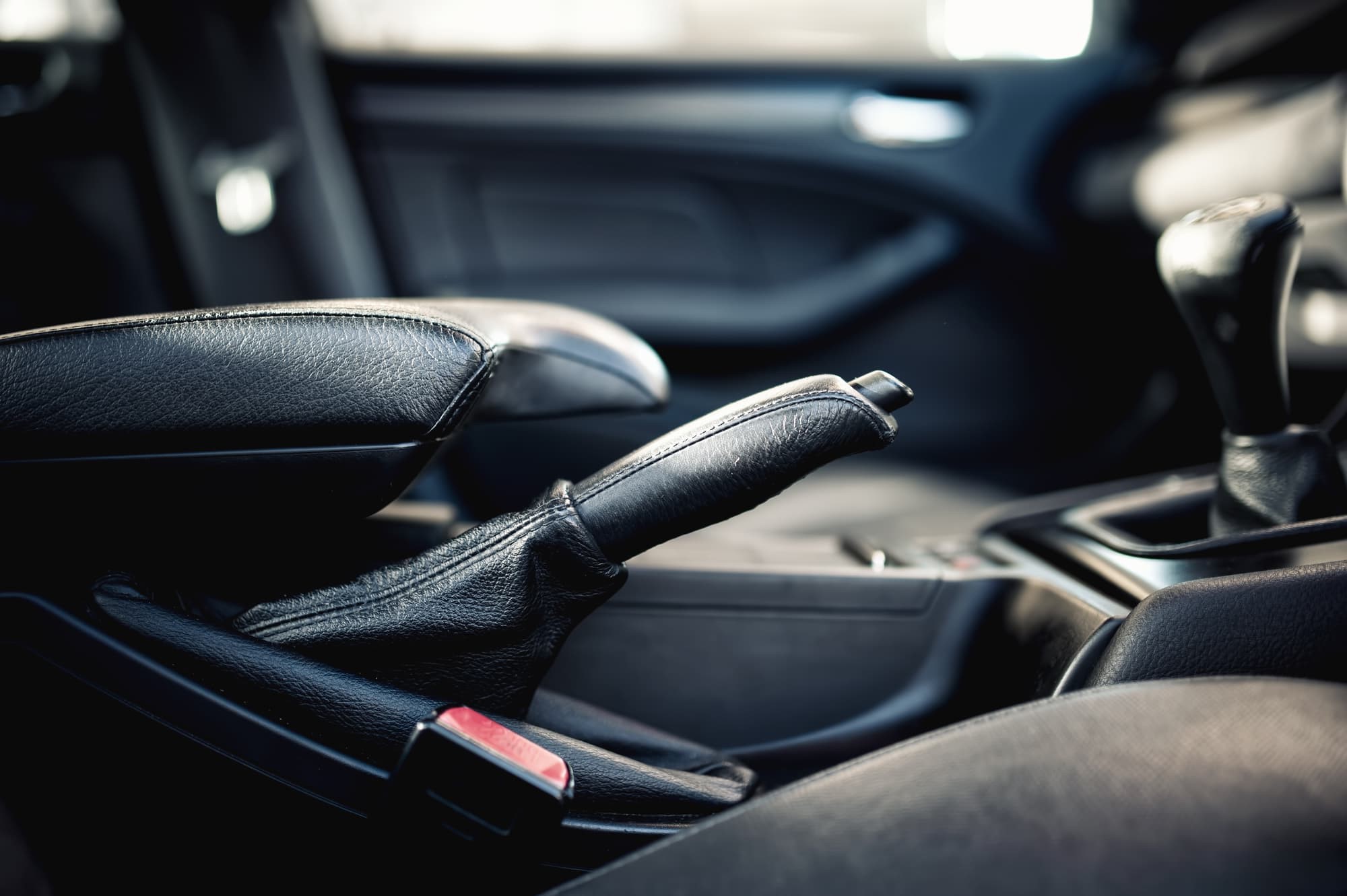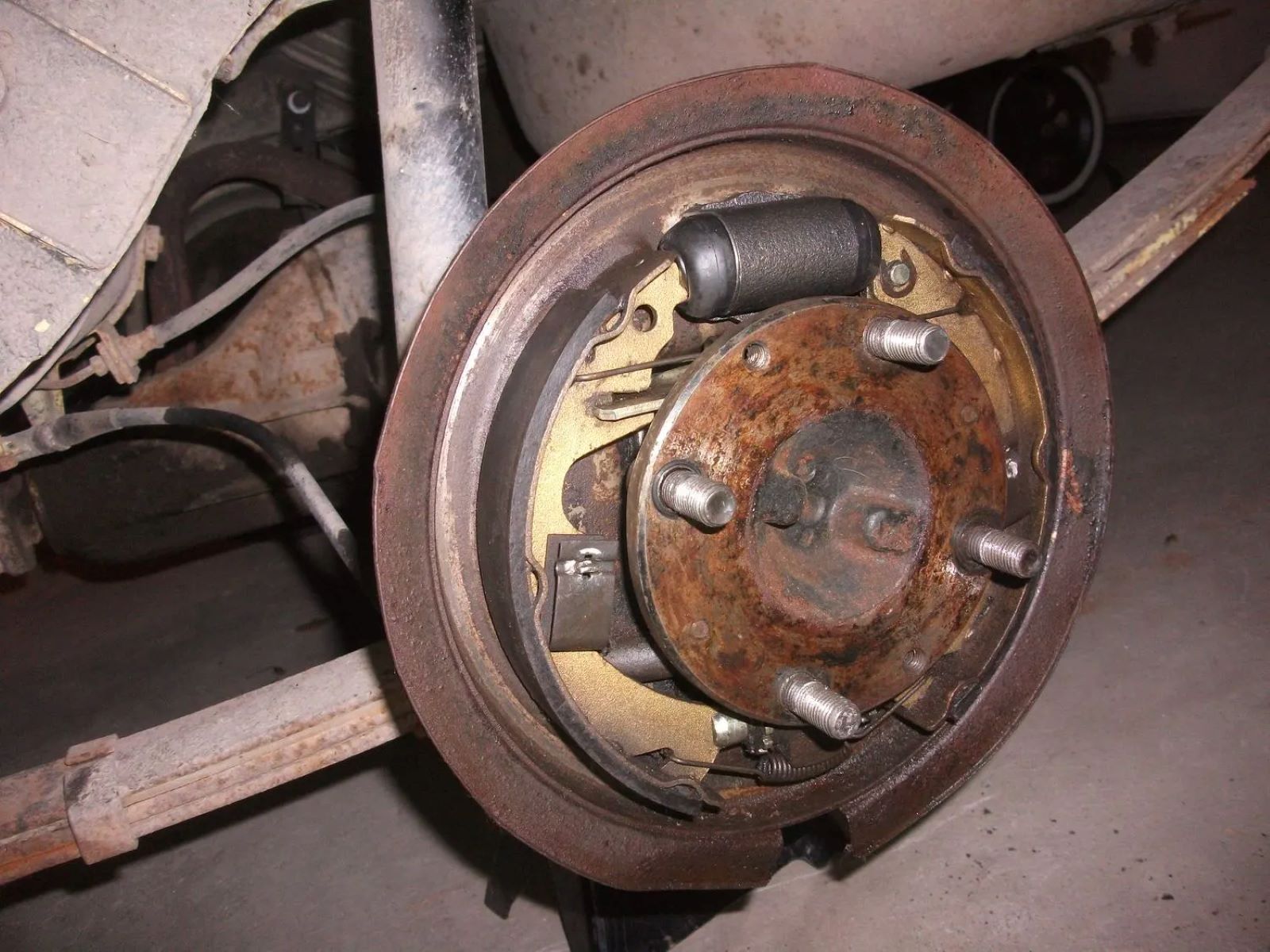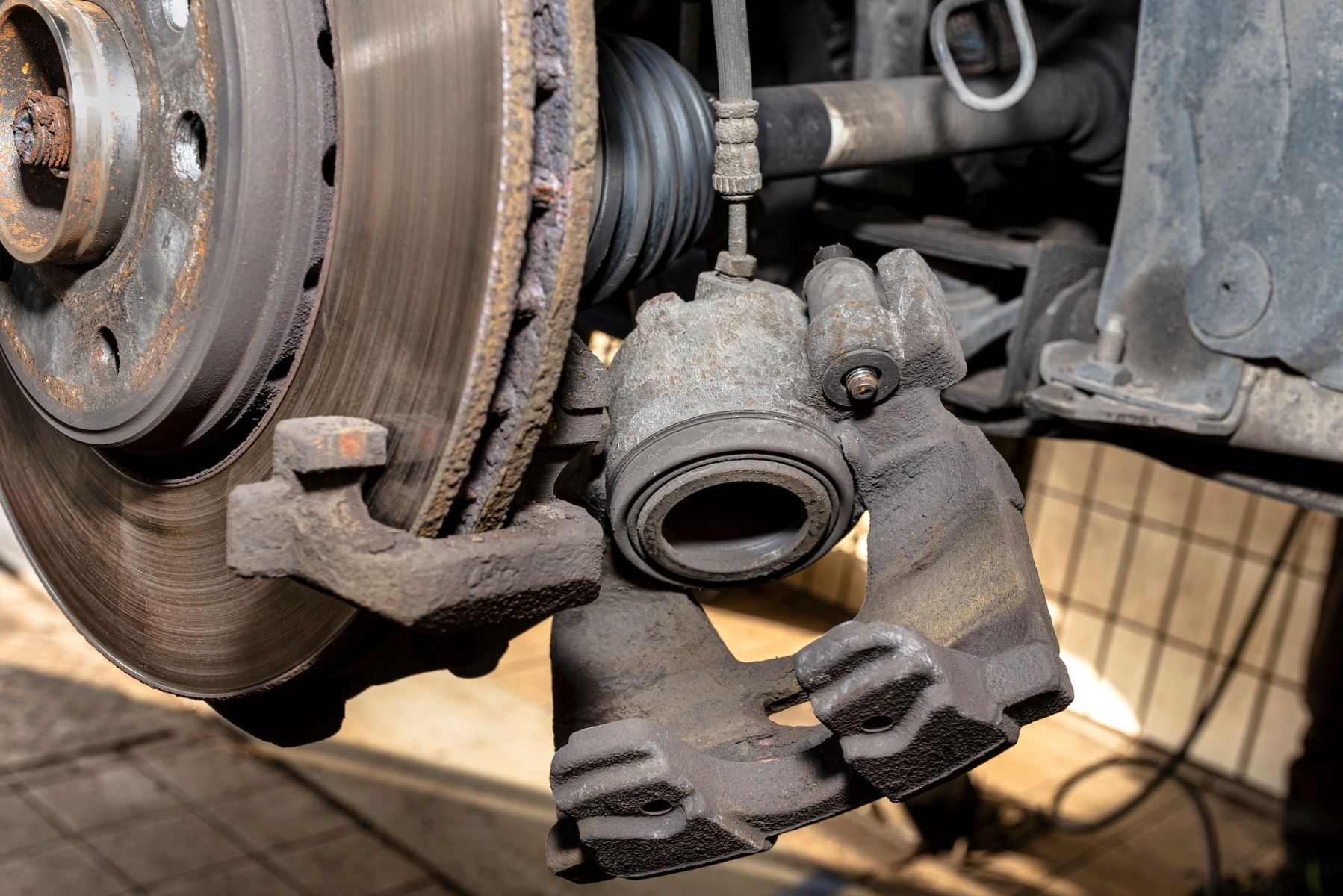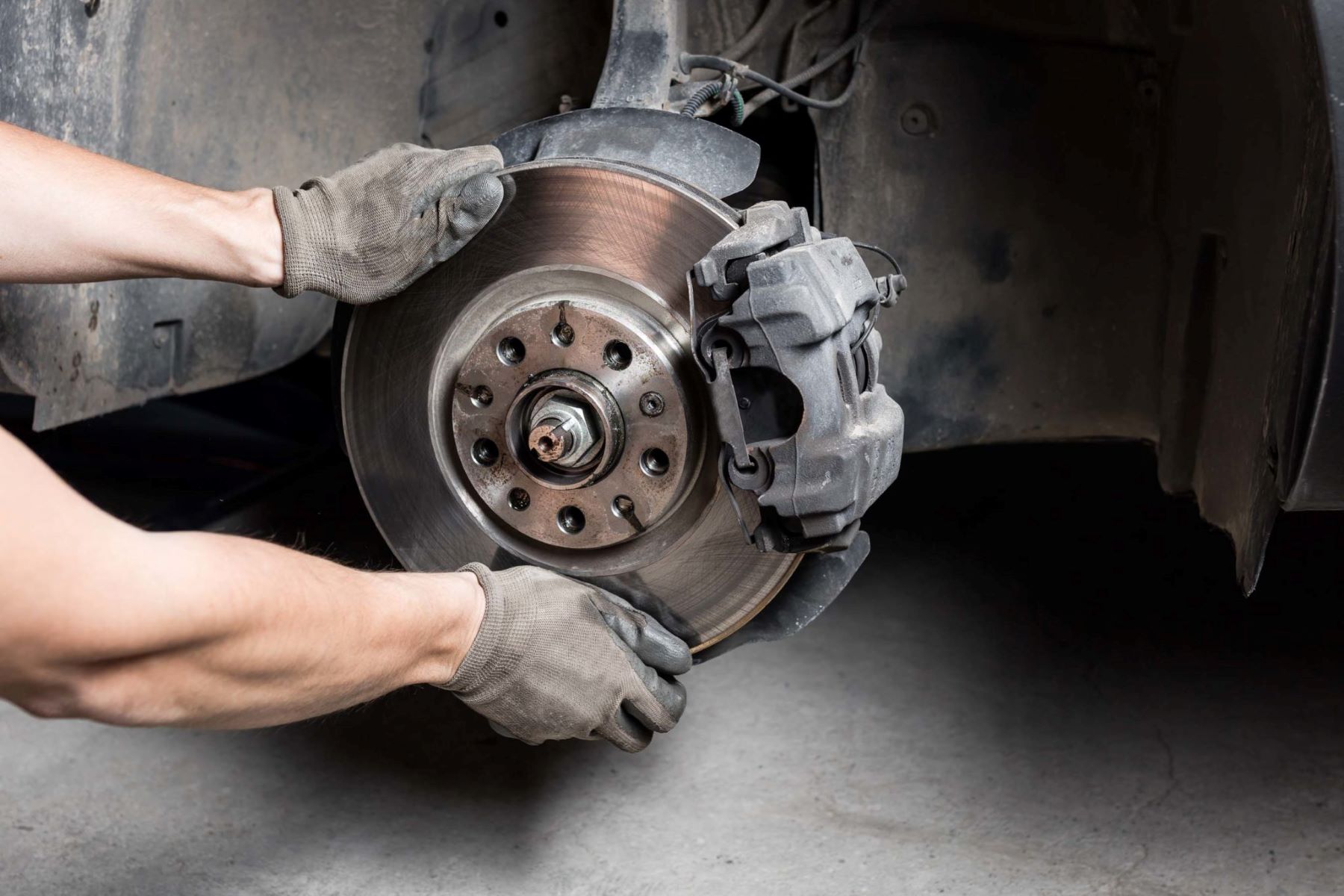Home>Automotive>How To Use The Emergency Brake


Automotive
How To Use The Emergency Brake
Published: February 28, 2024
Learn how to use the emergency brake in your car to ensure automotive safety and prevent accidents. Follow these simple steps to engage the emergency brake properly.
(Many of the links in this article redirect to a specific reviewed product. Your purchase of these products through affiliate links helps to generate commission for Regretless.com, at no extra cost. Learn more)
Table of Contents
Introduction
The emergency brake, also known as the handbrake or parking brake, is a crucial component of your vehicle's braking system. While its primary function is to prevent your vehicle from rolling when parked, it can also serve as an additional safety measure in emergency situations. Understanding how to properly use the emergency brake is essential for every driver, as it can prevent accidents and protect both your vehicle and those around you.
In this comprehensive guide, we will delve into the various aspects of using the emergency brake, including when and how to engage it, as well as essential tips for its effective use. Whether you are a new driver or have years of experience behind the wheel, mastering the proper use of the emergency brake is a fundamental skill that contributes to safe and responsible driving.
By the end of this article, you will have a clear understanding of the emergency brake's purpose and functionality, empowering you to confidently utilize this critical feature in your vehicle. Let's embark on this journey to demystify the emergency brake and equip ourselves with the knowledge and skills necessary for safe and efficient driving.
Read more: How To Release Your Parking Brake
Understanding the Emergency Brake
The emergency brake, often referred to as the handbrake or parking brake, is a secondary braking system in vehicles that serves multiple purposes. Contrary to its name, the emergency brake is not solely intended for use in emergency situations. While it can indeed provide an additional means of stopping the vehicle in the event of a primary brake failure, its primary function is to prevent the vehicle from moving when parked.
Unlike the primary braking system, which is operated by the foot pedal or brake lever, the emergency brake is typically engaged manually using a lever or a button located within the driver's reach. It is designed to act on the rear wheels of the vehicle, providing a secure hold to prevent the vehicle from rolling when parked on an incline or decline.
In addition to its parking function, the emergency brake can also serve as a safety measure in certain driving scenarios. For instance, when driving a manual transmission vehicle, engaging the emergency brake can prevent the vehicle from rolling backward when starting on an incline. This can alleviate the strain on the clutch and transmission, contributing to smoother and more controlled starts.
Understanding the emergency brake's role in vehicle safety and control is essential for every driver. It provides an added layer of security, especially when parking on steep inclines or navigating challenging driving conditions. By comprehending the purpose and functionality of the emergency brake, drivers can make informed decisions regarding its use, ultimately contributing to safer and more responsible driving practices.
In the next sections, we will explore when and how to use the emergency brake effectively, as well as essential tips for maximizing its utility. This comprehensive understanding will empower drivers to leverage the emergency brake as a valuable tool for vehicle safety and control.
When to Use the Emergency Brake
The emergency brake should be utilized in various situations to enhance vehicle safety and control. Understanding when to use the emergency brake is crucial for drivers, as it can prevent accidents and provide additional stability in specific driving scenarios.
-
Parking on Inclines: When parking on steep inclines or declines, engaging the emergency brake is essential to prevent the vehicle from rolling. Even if your vehicle is equipped with an automatic transmission and a park gear, using the emergency brake adds an extra layer of security, reducing the strain on the transmission and ensuring the vehicle remains stationary.
-
Manual Transmission Vehicles: In vehicles with manual transmissions, the emergency brake is particularly useful when starting on an incline. By engaging the emergency brake before releasing the clutch and accelerating, drivers can prevent the vehicle from rolling backward, thereby reducing wear on the clutch and transmission components.
-
Additional Security: In situations where the vehicle needs to be parked for an extended period, such as overnight or during inclement weather, using the emergency brake provides added security. This is especially important when parking on uneven surfaces or in areas prone to strong winds, as it minimizes the risk of the vehicle shifting or rolling unintentionally.
-
Emergency Situations: While the primary braking system is designed to handle normal stopping and deceleration, the emergency brake can serve as a backup in the event of brake failure. If the primary brakes malfunction, engaging the emergency brake can help bring the vehicle to a stop, albeit with reduced effectiveness. It is important to note that this should only be done in emergencies, as the emergency brake is not designed for regular braking.
By recognizing these scenarios and understanding the role of the emergency brake in each, drivers can make informed decisions regarding its use. Utilizing the emergency brake in the appropriate situations contributes to safer parking, smoother starts on inclines, and added security during extended parking periods. This comprehensive understanding empowers drivers to leverage the emergency brake as a valuable tool for enhancing vehicle safety and control.
How to Engage the Emergency Brake
Engaging the emergency brake is a straightforward process that varies slightly depending on the type of vehicle. Whether your vehicle is equipped with a hand-operated lever or a foot pedal, the fundamental steps for engaging the emergency brake remain consistent.
Hand-Operated Lever:
-
Locate the Lever: In vehicles with a hand-operated emergency brake, commonly known as a handbrake, the lever is typically positioned between the front seats or adjacent to the driver's seat. It may be a traditional lever or a modern electronic button or switch.
-
Apply Gradual Pressure: To engage the emergency brake, gently lift the lever or press the button while exerting gradual pressure. The lever should be raised until it reaches a firm and secure position, indicating that the brake has been engaged.
-
Check for Resistance: As you lift the lever, you should feel increasing resistance, signaling that the emergency brake is being applied to the rear wheels. Once the lever reaches its fully raised position, the emergency brake is effectively engaged, providing stability and preventing the vehicle from rolling.
Read more: How To Use Letters On Phone
Foot-Operated Pedal:
-
Locate the Pedal: In some vehicles, the emergency brake is operated using a foot pedal located to the left of the driver's footwell. This pedal is distinct from the primary brake pedal and is specifically designated for engaging the emergency brake.
-
Press Down Firmly: To engage the emergency brake using the foot pedal, press down firmly with your foot until you feel resistance. The pedal should be depressed to a sufficient depth to ensure that the emergency brake is fully engaged.
-
Confirm Engagement: After applying pressure to the foot pedal, ensure that the emergency brake is securely engaged by checking for resistance and verifying that the pedal remains in a stable position. This confirms that the emergency brake is effectively holding the vehicle in place.
Regardless of the method used to engage the emergency brake, it is essential to verify that the brake has been successfully applied. This can be confirmed by testing the vehicle to ensure that it remains stationary, even on inclines or declines. Mastering the process of engaging the emergency brake empowers drivers to enhance vehicle safety and control, contributing to responsible and secure driving practices.
How to Release the Emergency Brake
Releasing the emergency brake is a straightforward process that is essential for resuming normal driving. Whether your vehicle is equipped with a hand-operated lever or a foot pedal for the emergency brake, the fundamental steps for releasing the brake remain consistent.
Hand-Operated Lever:
-
Locate the Lever: In vehicles with a hand-operated emergency brake, commonly known as a handbrake, the lever is typically positioned between the front seats or adjacent to the driver's seat. It may be a traditional lever or a modern electronic button or switch.
-
Release the Lever: To release the emergency brake, simply press the button or switch if it is electronic, or press the release button on the lever and lower it gradually. As you lower the lever, you should feel the resistance decrease, indicating that the brake is being released.
-
Verify Release: After lowering the lever, ensure that the emergency brake is fully released by testing the vehicle's movement. You should feel the vehicle becoming free to roll, confirming that the emergency brake has been disengaged.
Read more: How To Use Letters On Phone
Foot-Operated Pedal:
-
Locate the Pedal: In some vehicles, the emergency brake is operated using a foot pedal located to the left of the driver's footwell. This pedal is distinct from the primary brake pedal and is specifically designated for releasing the emergency brake.
-
Lift the Pedal: To release the emergency brake using the foot pedal, lift your foot off the pedal to disengage the brake. As you lift your foot, you should feel the resistance decrease, indicating that the emergency brake is being released.
-
Confirm Release: After lifting your foot off the pedal, ensure that the emergency brake is fully released by testing the vehicle's movement. You should feel the vehicle becoming free to roll, confirming that the emergency brake has been disengaged.
By following these simple steps, drivers can effectively release the emergency brake, allowing for smooth and unimpeded driving. It is crucial to verify that the brake has been fully released before resuming normal operation, ensuring optimal vehicle safety and control. Mastering the process of releasing the emergency brake empowers drivers to seamlessly transition from parked to driving, contributing to responsible and secure driving practices.
Read more: How To Use Oil Pastels
Tips for Using the Emergency Brake
-
Regular Maintenance: Ensure that the emergency brake system is inspected and maintained as part of routine vehicle servicing. This includes checking the condition of the brake cables, ensuring proper tension, and verifying that the brake holds the vehicle securely when engaged. Regular maintenance contributes to the reliability and effectiveness of the emergency brake, enhancing overall vehicle safety.
-
Practice Engaging and Releasing: Familiarize yourself with the process of engaging and releasing the emergency brake in a safe and controlled environment. Practice parking on inclines and using the emergency brake to gain confidence in its functionality. Similarly, practice releasing the brake to ensure a smooth transition from parked to driving. This hands-on experience enhances your ability to use the emergency brake effectively in real-world scenarios.
-
Avoid Over-Engagement: When engaging the emergency brake, apply sufficient pressure to hold the vehicle in place without over-tightening. Over-engaging the brake can lead to excessive wear on the brake components and may cause the rear wheels to lock, affecting the vehicle's stability. Striking the right balance ensures that the emergency brake provides the necessary hold without unnecessary strain.
-
Use in Combination with Transmission: When parking on inclines, consider using the emergency brake in conjunction with the transmission. For manual transmission vehicles, engage the emergency brake before shifting into first gear when parking on an incline. For automatic transmission vehicles, engage the emergency brake before shifting into the park position. This dual approach provides added security and reduces strain on the transmission, contributing to smoother starts and reduced wear on the drivetrain.
-
Release Before Driving: Always remember to release the emergency brake before driving. Failing to release the brake can lead to excessive wear on the brake components and may cause drag on the rear wheels, affecting fuel efficiency and overall driving performance. Prior to setting the vehicle in motion, ensure that the emergency brake has been fully released to allow for unimpeded driving.
-
Emergency Brake in Winter: In cold weather conditions, periodically engage and release the emergency brake to prevent it from seizing due to rust or corrosion. This simple action helps maintain the functionality of the emergency brake during winter months, ensuring that it remains operational when needed.
By incorporating these tips into your driving practices, you can maximize the effectiveness of the emergency brake, contributing to safer parking, smoother starts on inclines, and enhanced vehicle safety and control. These proactive measures empower drivers to utilize the emergency brake as a valuable tool for maintaining safe and responsible driving habits.
Conclusion
In conclusion, the emergency brake is a fundamental component of every vehicle, serving as a critical safety feature that enhances vehicle control and stability. Understanding the purpose and proper utilization of the emergency brake is essential for all drivers, as it contributes to safe parking, smoother starts on inclines, and added security in emergency situations. By mastering the engagement and release of the emergency brake, drivers can confidently navigate various driving scenarios while prioritizing safety and responsible vehicle operation.
Throughout this comprehensive guide, we have explored the multifaceted role of the emergency brake, delving into its functions as a parking aid, safety measure, and backup braking system. From parking on inclines to navigating challenging driving conditions, the emergency brake offers invaluable support in maintaining vehicle stability and preventing unintended movement.
Furthermore, the tips provided for using the emergency brake underscore the importance of regular maintenance, practice, and mindful engagement. By incorporating these proactive measures into driving habits, drivers can optimize the effectiveness of the emergency brake, ensuring its reliability and functionality when needed most.
As drivers, it is our responsibility to prioritize safety and implement best practices for vehicle operation. The knowledge and skills gained from understanding the emergency brake's functionality empower us to make informed decisions, ultimately contributing to safer roads and enhanced driving experiences for all.
In essence, the emergency brake is not merely a secondary braking system; it is a vital tool that enhances vehicle safety, control, and stability. By embracing its role and mastering its use, drivers can navigate the roads with confidence, knowing that they have a reliable safety mechanism at their disposal.
In closing, let us continue to prioritize safe and responsible driving practices, recognizing the emergency brake as an indispensable ally in our journey towards secure and enjoyable travels. With a deep understanding of the emergency brake's significance and proper utilization, we can pave the way for a safer and more harmonious driving environment for all.













